Why do Yosemite wildlife biologists capture bears in Yosemite and what do they do when they catch a bear? Wildlife biologists may trap or dart a bear for many reasons, but the most common reason in Yosemite National Park is to manage human-bear conflict. Bears that get human food can start spending time in areas close to people and begin seeking food from humans. These bears lose some of their natural behaviors and may sometimes pose a public safety risk. Capturing a bear gives wildlife rangers tools to help manage and protect both bears and visitors in Yosemite.
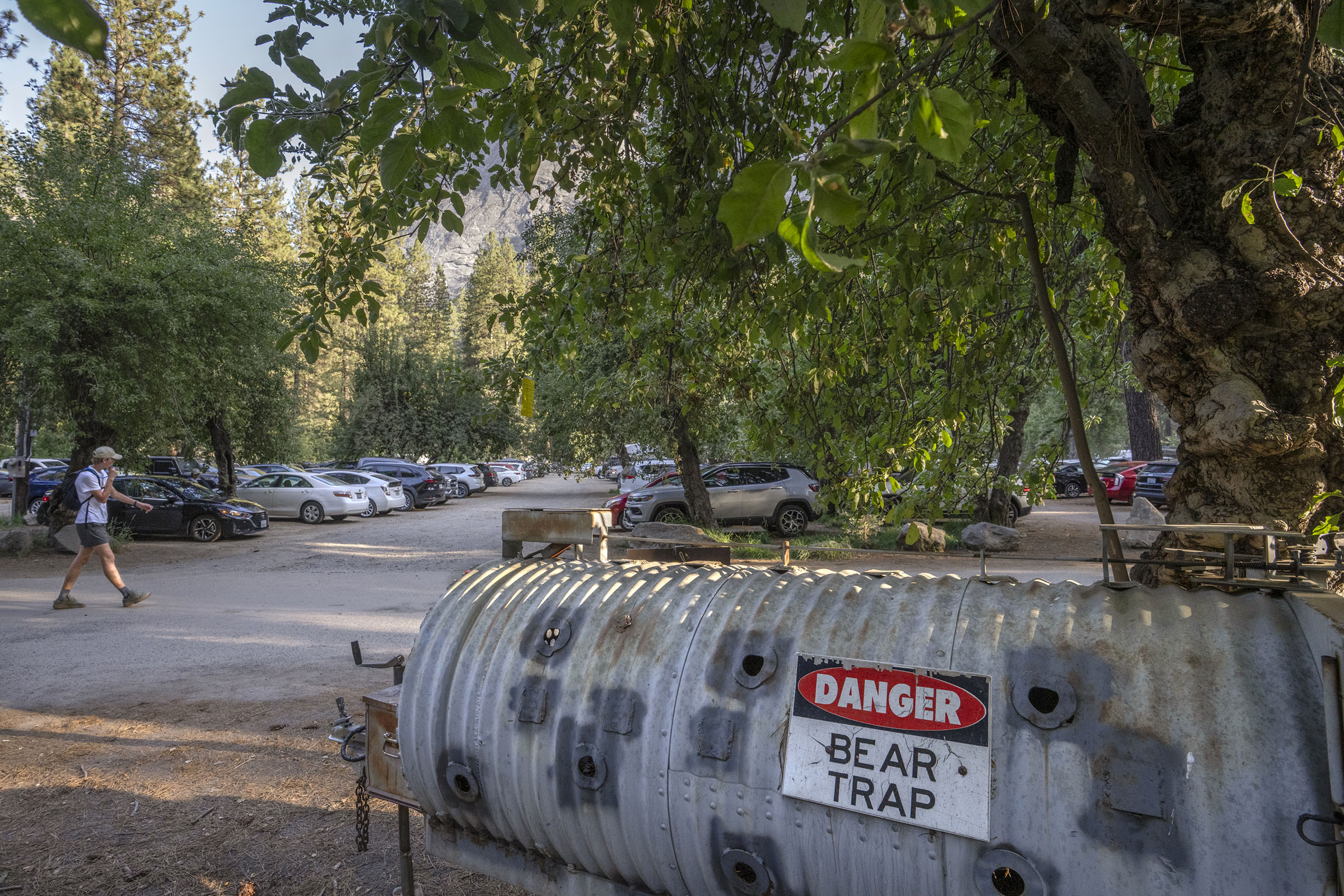
A bear trap trailer with a sign “Danger Bear Trap” is parked in a packed parking lot with trees. Credit: J. Hadley
After a bear is caught in a trap, qualified wildlife biologists follow strict protocols developed with National Park Service veterinarians to chemically immobilize the bear with veterinary drugs so the bear can be handled safely. A syringe attached to a pole is used to reach the bear in the trap without endangering park staff. Once the bear is anesthetized, it is carefully removed from the trap using a litter and weighed. The bear is then set down on a tarp to be examined by wildlife biologists. Biologists apply ointment to protect the bear’s eyes and give the bear oxygen through a nasal cannula. The bear’s face is covered to prevent damage to the bear’s eyes and reduce additional stress to the animal.
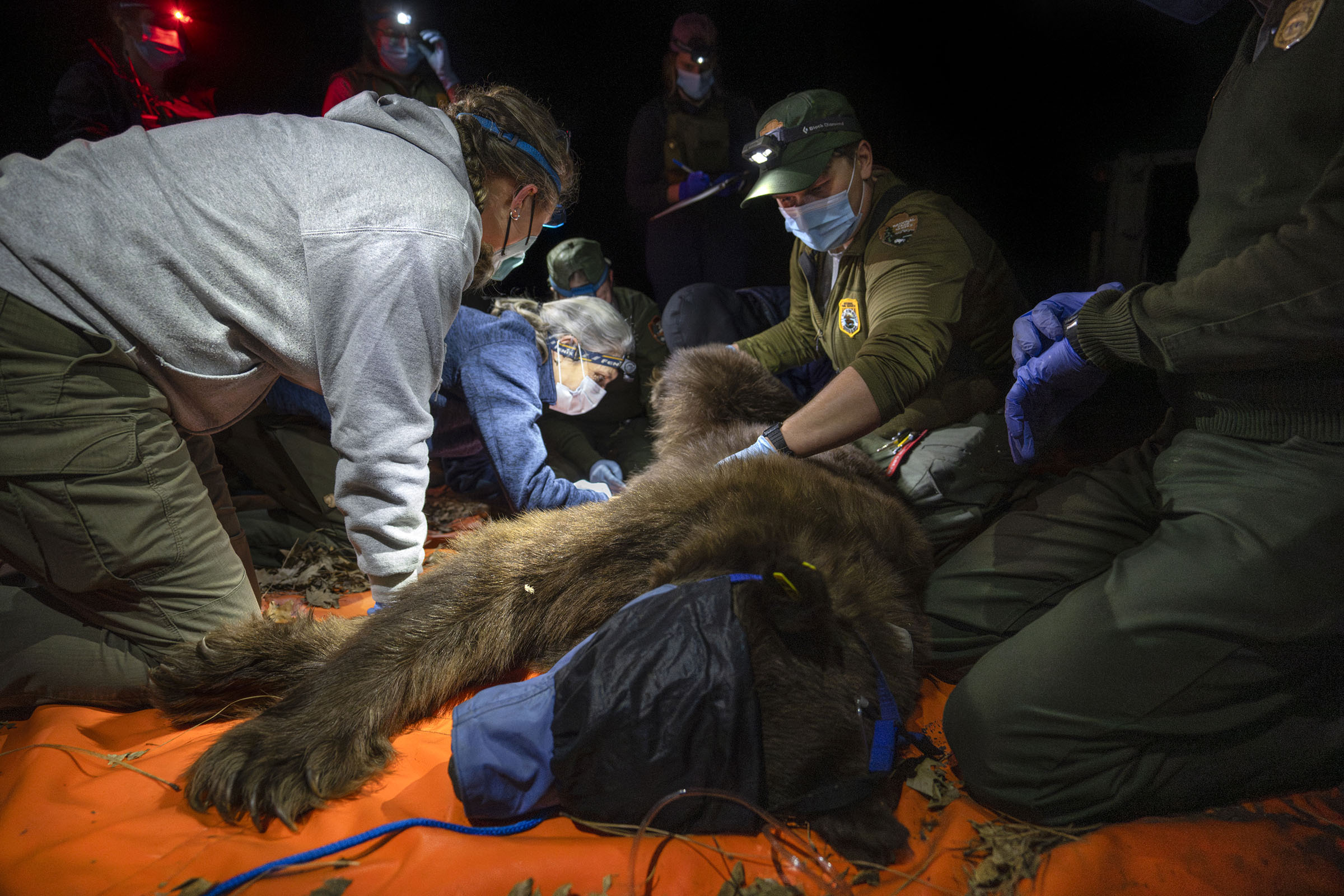
Biologist prepare to draw a blood sample on an anesthetized bear. Credit: J. Hadley
The most important part of any capture operation is the safety of the bear and park staff. Vital signs are taken at least every five minutes as soon as the bear is removed from the trap to track how the bear is handling the drug. A general health assessment begins: biologists look at the overall physical condition of the bear and check for injuries and parasites. Biologists then check bear claws to note any fraying, which can be an indicator of a bear pulling on man-made objects like the metal of trash or a car. Then body measurements are taken and used along with tooth wear to estimate the bear’s age. The bear’s color and molt status are noted, along with a drawing of any markings (or blazes) on its chest.
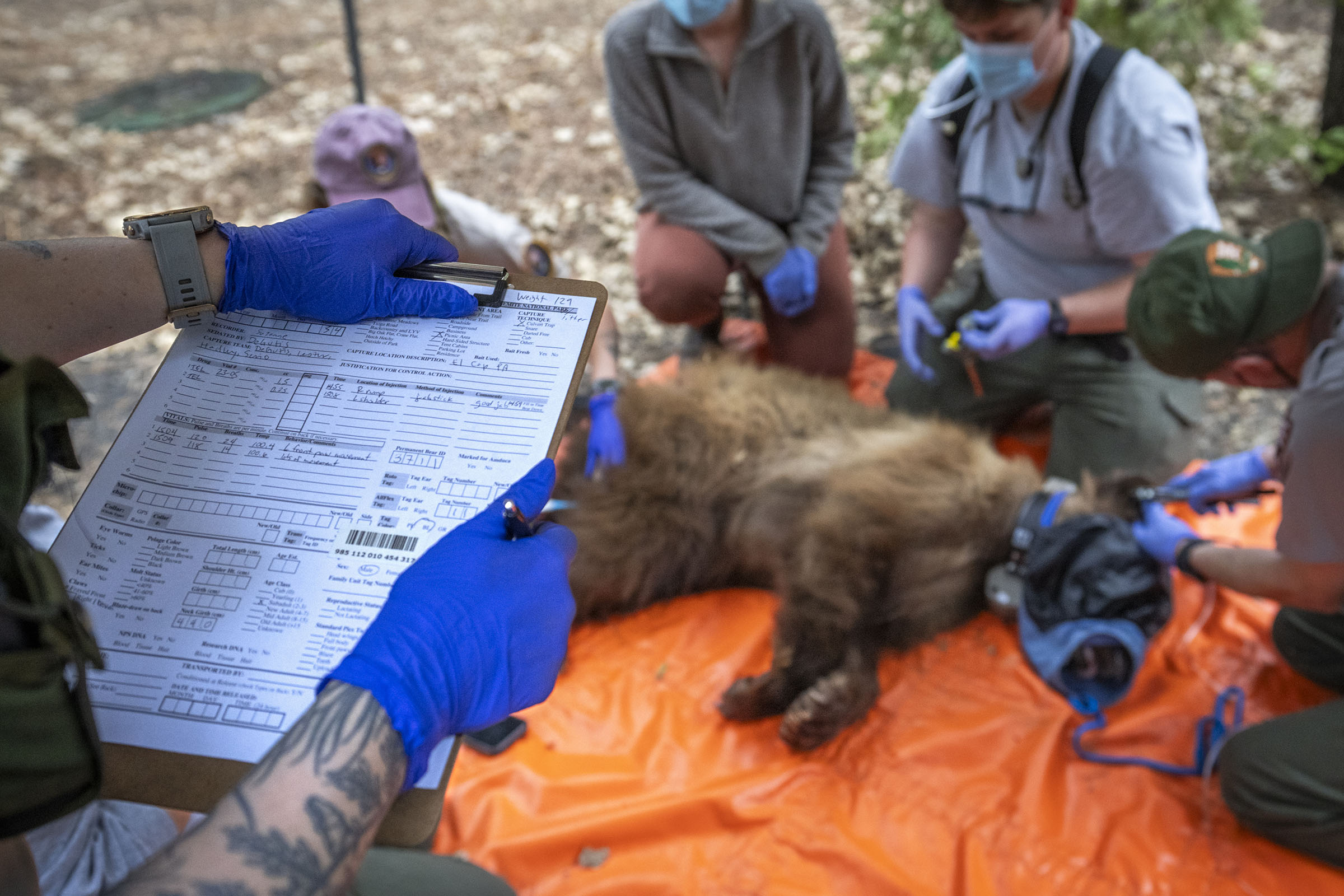
A biologist holds a clipboard with a datasheet on it in front of four biologists handling an anesthetized bear. Credit: J. Hadley
Biological samples are taken during the capture for recordkeeping and to further research. Blood and hair are collected for DNA sampling or even can determine how much human food a bear has been eating based on the ratios of isotopes like carbon-13 and nitrogen-15 deposited in tissue. These samples may also indicate diseases the bear has been exposed to like plague or other diseases of interest. Ticks and fleas are collected and preserved for future study.
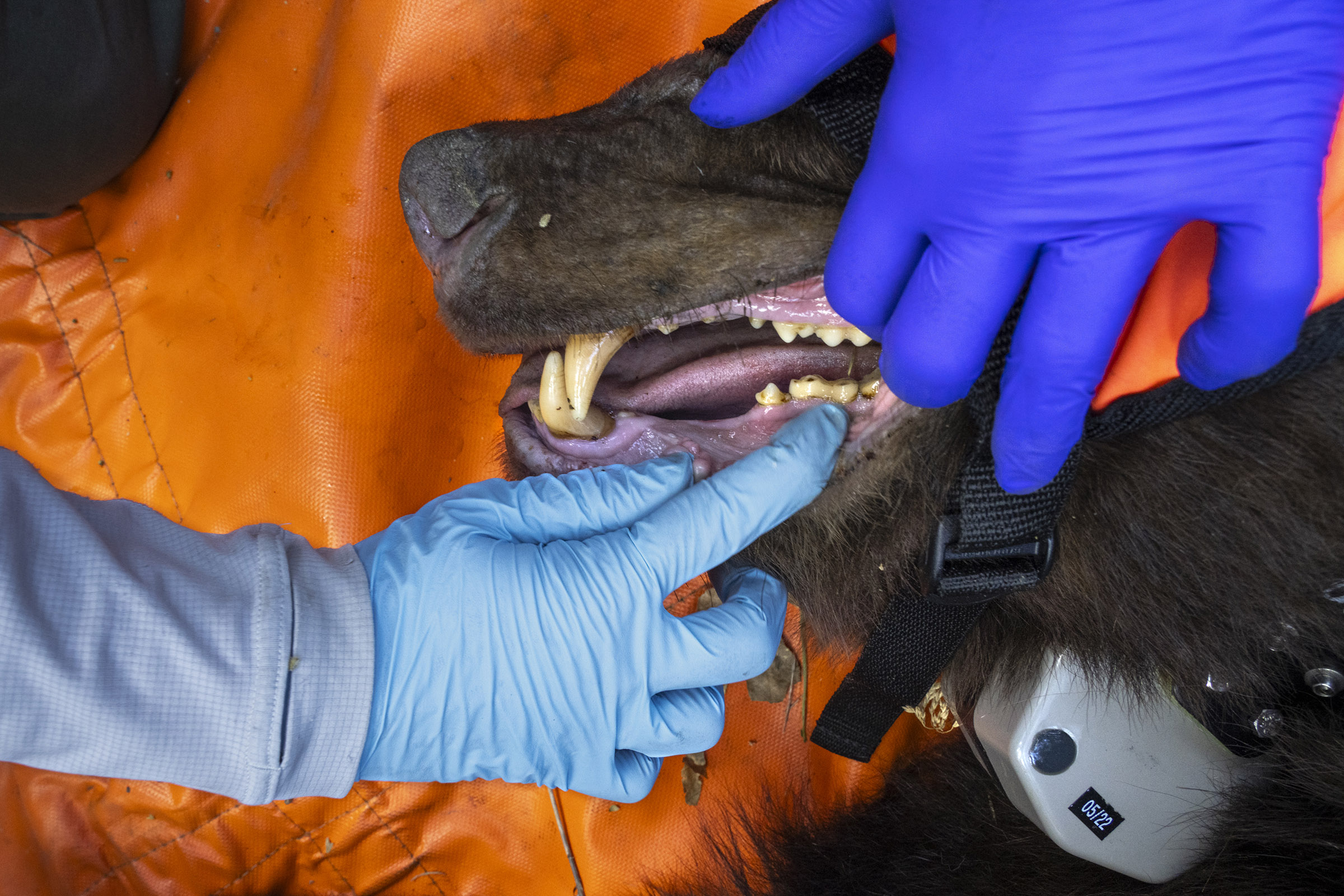
Biologists estimate a bear’s age by analyzing the wear pattern on its teeth. Credit: J. Hadley
Biologists generally put two identification tags on the bear during the capture, one in each ear. A larger tag (similar to what you might see on a cow) helps biologists identify a bear from a distance, while a smaller yellow tag printed with a four-digit number will likely stay in for much longer and effectively is the bear’s unique identifier for biologists throughout its life. Despite some misconceptions, tag color and numbers have no meaning other than to quickly identify individual animals.
If a bear is a good candidate based on size and weight and how much biologist are concerned about its behavior it may be fitted with a GPS collar around its neck. Since ear tags are only used for identification in Yosemite, they generally do not allow biologists to track bear locations remotely. Instead, GPS collars collect a data point of the bear’s location hourly which is then transmitted to a satellite and accessible for biologists to review every few hours via a website. In a park as big as Yosemite, that can take hours to drive across, the ability to follow a bear’s location from a phone is a huge advantage in helping to keep them from human food and development. GPS collars also have a radio transmitter, which biologists can find and follow using a specialized antenna and receiver in real time in the field. Collars are key in allowing biologists to monitor bears that have started to lose their fear of humans or get human food. Yearlings or bears too small for collars may instead be fitted with ear transmitters that allow for tracking, but do not provide location data. After all the hands-on work is finished, the bear is returned to the bear trap to recover from anesthesia. Once fully recovered, bears are then released back into their home ranges. Moving bears to new areas rarely works. Years of collar data show that bears translocated away from where they were captured almost always return quickly, and Yosemite bears are never moved outside the park.
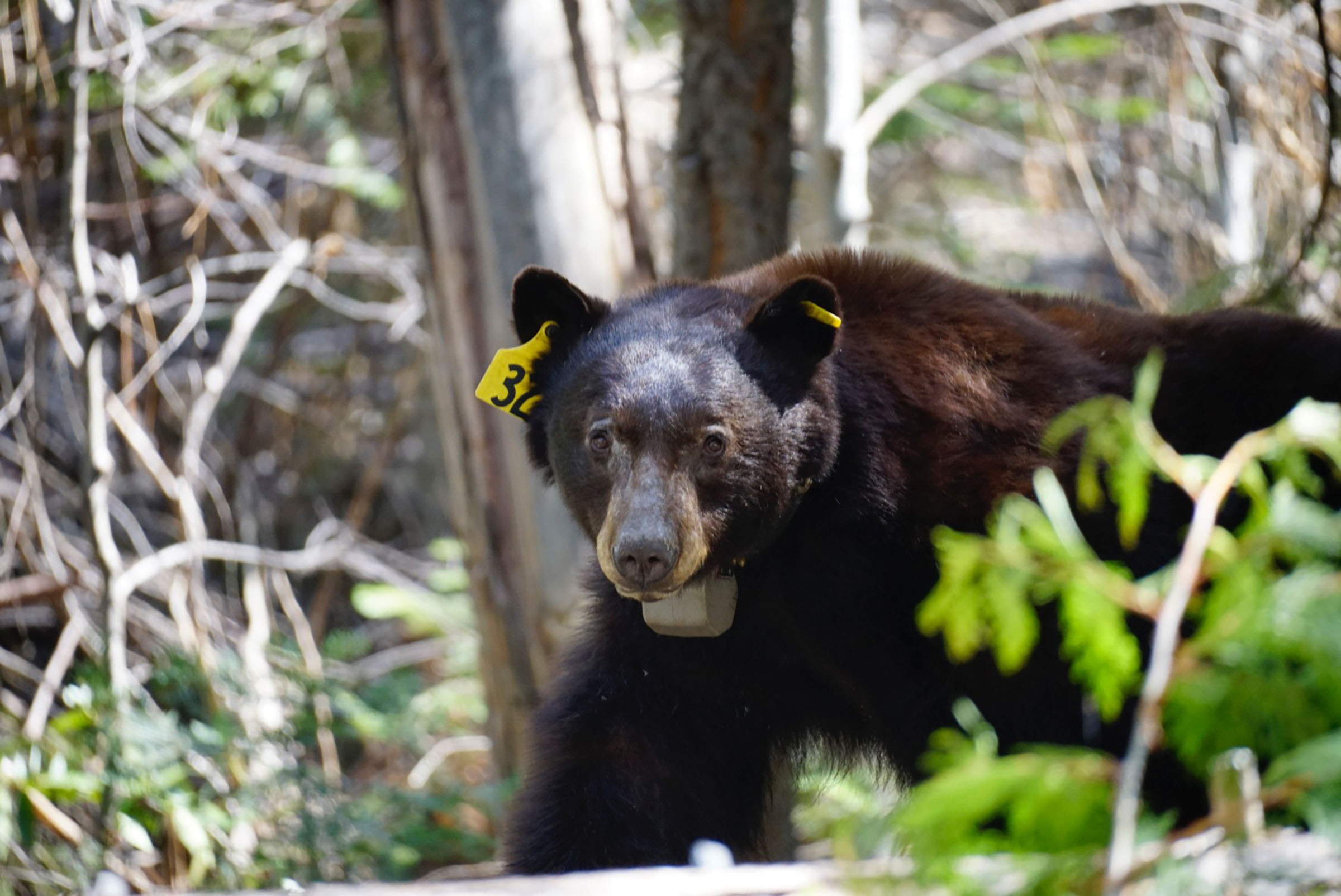
A dark colored bear with a collar and ear tags in both ears stands in the forest. Credit: NPS/R. Lester
The best part of catching a bear is releasing it from the trap, allowing it to return to being wild and free. While the capture and handling of bears is critically important for wildlife managers to protect people and bears, the best way to protect bears is to prevent them from losing their wildness in the first place. Wildlife professionals carefully weigh the risks that medical procedures like anesthesia (chemical immobilization) pose to a bear—bears are only captured because it allows biologists to prevent conflict that could otherwise be fatal to the bear or cause injury to people. That said, preventing bears from getting human food or becoming comfortable around people in the first place is the best way to protect bears: bear-resistant trash cans and dumpsters save more bears than collars or tags, along with keeping your distance and giving bears respect as wild animals. Less than 10% of Yosemite bears will ever be collared and most Yosemite bears are wild and are never captured. In the best-case scenario, biologists never have to capture bears at all.
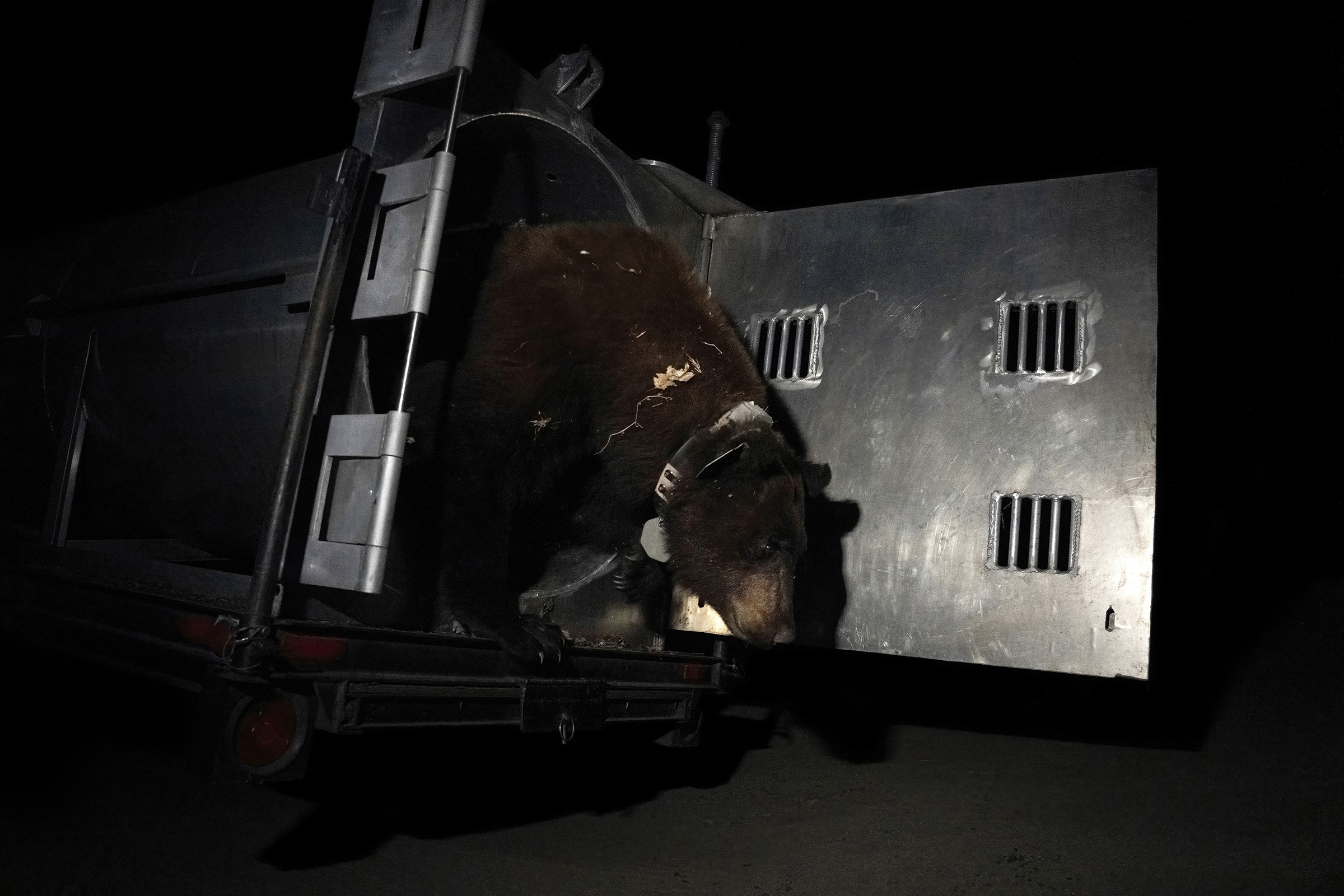
A large bear emerges from an open trap wearing a GPS collar. Credit: J. Hadley
